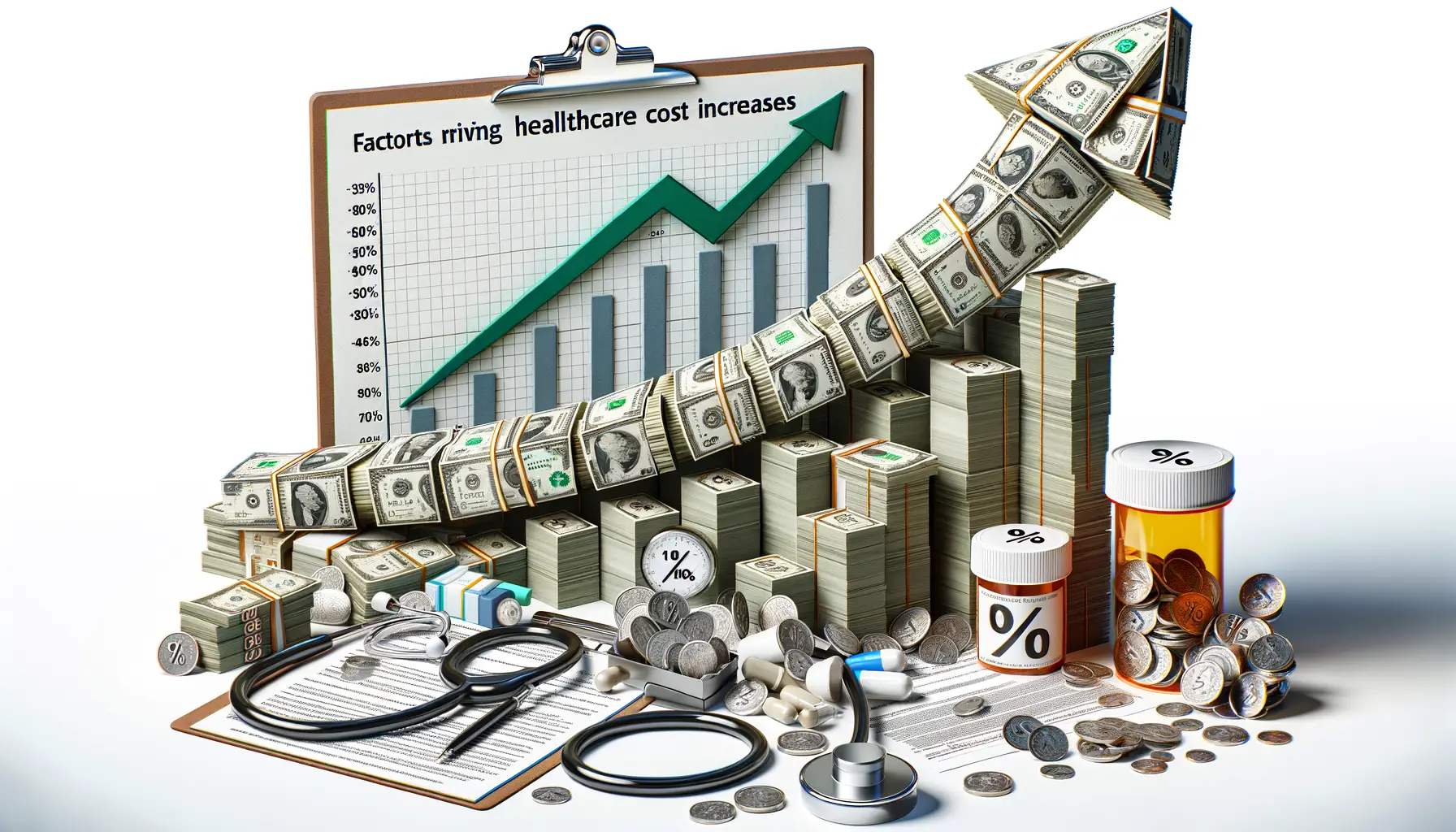Understanding Inflation and Its Effects on Healthcare
What Exactly Is Inflation Doing to Your Medical Bills?
Imagine this: inflation is like a silent current beneath the surface, steadily pulling prices higher while you’re focused on staying afloat. Nowhere is this current more unsettling than in healthcare. When inflation strikes, everything from medications to hospital stays feels the pinch. Why? Because it’s not just your grocery bill climbing—it’s also the cost of producing life-saving drugs, running state-of-the-art equipment, and hiring medical professionals.
Think about it. The price of cotton used for bandages goes up? So does the cost of surgeries. Fuel prices increase? Ambulances don’t run for free. This domino effect means the financial burden doesn’t just land on hospitals and clinics—it lands squarely on patients’ shoulders.
- Your monthly premium? Up.
- Out-of-pocket medication costs? Rising.
- Even routine checkups? Suddenly pricier.
Inflation doesn’t pick favorites; it impacts every corner of the system. That quick doctor’s visit that cost $100 last year? Don’t be surprised when it’s $115 today. It’s not always greed—sometimes, it’s inflation playing havoc behind the scenes.
The Emotional Toll of Rising Healthcare Costs
It’s one thing to hear “prices are increasing,” but it’s another when it hits home. Picture this: a parent skipping their own dental appointment to ensure their child’s vaccines stay on schedule. Or a senior citizen halving their medication doses to stretch their prescription a little further. These aren’t just numbers on a bill—they’re deeply personal sacrifices, born from the relentless rise of healthcare costs.
Inflation sneaks into every crack of your life. That flu shot you’d brush off as “routine”? Even that gets tangled in this web of soaring expenses. And the emotional weight doesn’t stop with your wallet—it creeps into your decisions. Do you choose care now and risk financial strain later? Or wait it out, hoping things stabilize?
The harsh truth? For many, these choices aren’t optional—they’re emotional minefields.
Factors Driving Healthcare Cost Increases

When Innovation Comes with a Hefty Price Tag
Picture this: groundbreaking medical treatments, cutting-edge technology, and life-saving drugs becoming more common. Sounds like progress, right? But there’s a catch—these advancements often come hand-in-hand with soaring price tags. For instance, while robotic surgery systems and AI-assisted diagnostics promise precision, their development and operational costs are anything but modest. And let’s not forget those miracle drugs. The hefty price of research, clinical trials, and approvals often gets passed down to—you guessed it—patients and healthcare systems.
And here’s the kicker: newer doesn’t always mean better for your wallet. Imagine a hospital upgrading to the latest MRI machine—it’s faster, sharper, more reliable. What’s the downside? The upgrade could cost millions, and those expenses tend to sneak into your medical bills like uninvited guests at a party.
The Workforce Squeeze
Let’s talk about another elephant in the room: staffing costs. Healthcare professionals aren’t just heroes—they’re also human. With demand for skilled doctors, nurses, and technicians skyrocketing, they’re asking for well-deserved raises and benefits. That’s fair, right? But:
- Workforce shortages force hospitals to pay premium rates for temporary staff.
- Burnout and turnover mean more recruiting and training costs piling up like a never-ending stack of paperwork.
- Specialists with niche expertise command salaries so high they’d make even Wall Street blush!
It’s a classic domino effect: rising salaries ensure top-notch care, but they leave facilities struggling to balance the books. Combine that with inflation, and you’ve got a recipe for mounting expenses that ripple across the entire healthcare system.
The Role of Policy and Government in Controlling Costs

How Policy Shapes the Healthcare Cost Landscape
When it comes to healthcare costs, policy isn’t just another cog in the machine—it’s the steering wheel. Governments have the power to chart a course toward affordability or let costs spiral out of reach. Think about it: the right legislation can make life-saving treatments affordable, while poorly conceived policies can feel like a chokehold on your wallet.
For instance, did you know that some countries cap drug prices to keep medications accessible? In the U.S., however, drug pricing is often a Wild West scenario, with pharmaceutical companies setting prices sky-high. That’s where government intervention can either be a hero or fall frustratingly short.
Medicare price negotiations, subsidies for insurance premiums, and public health funding are some tools policymakers wield to tackle inflation’s impact on healthcare. When done well, these measures can be like an umbrella in a downpour. But without proactive governance, families may find themselves drowning in bills.
- Regulated pricing systems: Countries like Canada and Germany control costs with strict price caps.
- Incentivizing preventive care: Policies promoting wellness programs can lower long-term expenses by catching issues before they escalate.
The question remains: will leaders lean into innovation and foresight or let politics muddy the waters?
Economic Impacts of Rising Healthcare Expenses

How Healthcare Costs Ripple Through Our Lives
Imagine this: you’re navigating your monthly budget, juggling groceries, rent, and maybe saving for a family vacation. Then, an unexpected medical bill crashes into your plans like an uninvited guest. Sound familiar? That’s the reality for millions as rising healthcare expenses tighten their grip on everyday finances.
When healthcare costs spike, it’s not just wallets that feel the squeeze. Families are forced to make hard decisions—postponing care, skipping medications, or delaying routine medical checkups. This isn’t just an inconvenience; it’s often a risky gamble with long-term health consequences.
Now let’s think bigger. For businesses, increasing insurance premiums create tough choices:
- Do they pass the extra costs to employees?
- Cut back on benefits?
- Or limit hiring altogether?
These pressures can stifle economic growth. Smaller companies may even close their doors entirely, unable to afford rising employee healthcare costs.
And let’s not overlook the impact on retirement savings. When families divert funds to cover medical bills, their ability to save for the future erodes. It’s like trying to fill a bucket with a hole in the bottom—frustrating, draining, and seemingly impossible to get ahead.
Strategies to Mitigate the Impact of Inflation on Healthcare

Revolutionizing How We Spend on Healthcare
Inflation might feel like an invisible force tightening its grip on your wallet, but tackling it head-on is entirely possible. It starts with smart strategies to reimagine how we allocate resources in healthcare. Imagine this: instead of feeling overwhelmed by rising costs, what if we could outsmart them?
One powerful tactic is embracing preventive care. Why wait for a problem to grow into a full-blown crisis when you can nip it in the bud? Regular screenings, vaccinations, and healthier lifestyle choices not only preserve your well-being but also save you from hefty bills. Think of it as investing in a sturdy umbrella before the storm hits.
Another way? Harnessing the power of technology. From telemedicine saving you that costly trip to the clinic to apps that track medications or chronic conditions, digital tools are becoming healthcare superheroes—cutting expenses without cutting corners.
- Shopping for services: Compare prices for procedures or prescriptions. You’d do it for a new phone; why not for your health?
- Negotiating medical bills: A simple call to your provider could potentially reduce that intimidating invoice.
Empowering Policy Changes and Community Support
On a bigger scale, advocating for reforms can be game-changing. Policies that promote fair drug pricing or expand public healthcare access help soften inflation’s sting. Your voice matters, whether it’s voting for initiatives or joining local healthcare advocacy groups.
Community support networks can’t be underestimated either. Sharing resources within your neighborhood or workplace—like group health plans or caregiver support systems—can lighten financial burdens and create resilience against rising costs.
